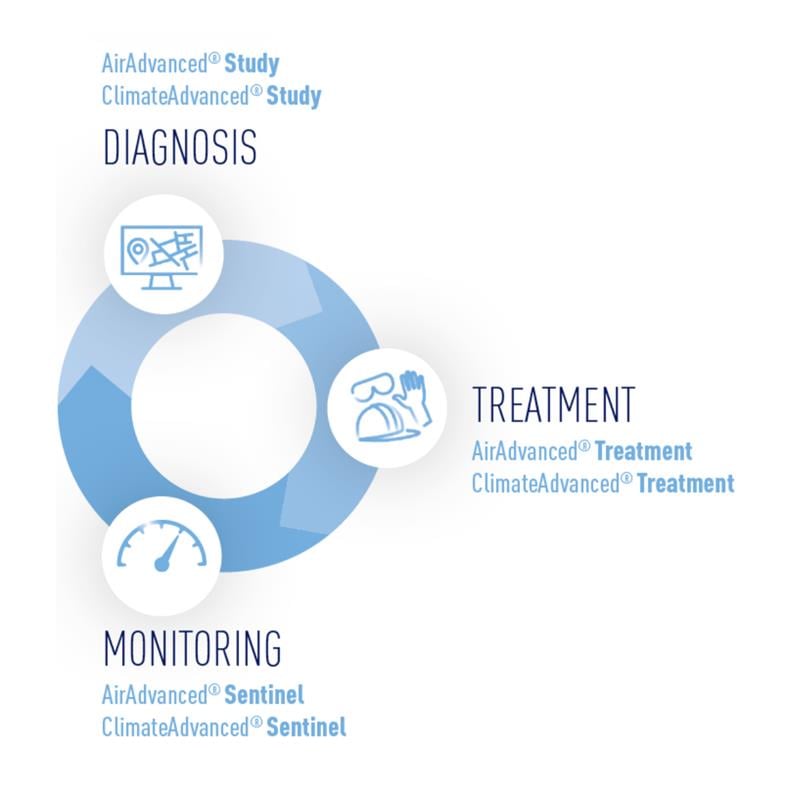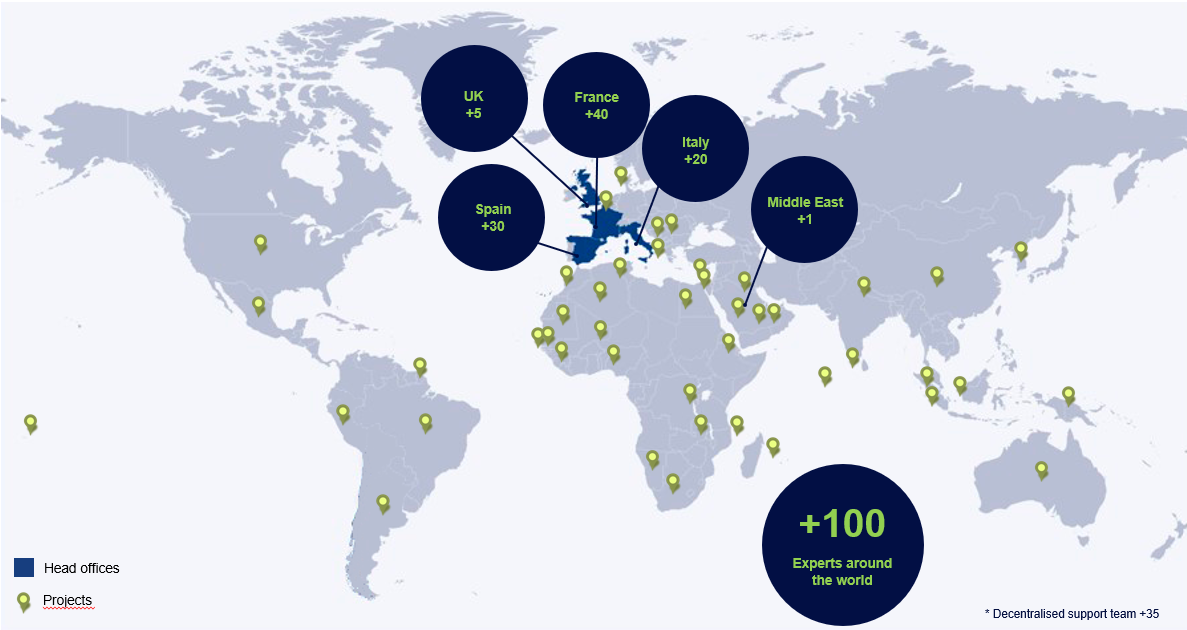Discover
Our air & climate advice and solutions, for public authorities and industry
We provide services and solutions to measure, model, anticipate, reduce and treat atmospheric emissions.
Drawing on our experience as operators of public services and industrial processing sites, we implement practical solutions to reduce air quality and combat global warming.
How can we help you?
Management of atmospheric emissions is an increasing challenge towards improving air quality and combatting global warming.
As a reliable partner across the entire value chain, we will accompany you to understand and monitor atmospheric emissions and take action to minimize their impacts.
Our services include audits, studies, measurements, real-time monitoring, modelling, forecasting, and the implementation of treatment solutions. We also provide innovative technologies developed through our R&D centres and collaborations with leading European research institutions, such as CEA, and through programs like H2020 and Horizon projects.
















